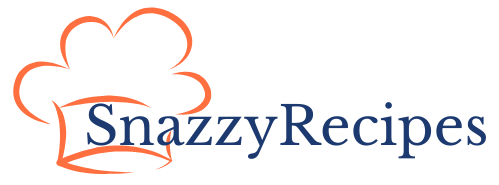Did you know that the average American spends 41 minutes per grocery shopping trip, yet 68% still forget at least one essential ingredient? It’s a frustrating experience we’ve all shared – standing in the middle of a supermarket aisle, wondering what we need for that perfect meal. Having well-structured shopping guides can transform your culinary adventures from stressful to satisfying. Whether you’re a seasoned chef or just starting your cooking journey, understanding the essentials for your recipe hunt can save you time, money, and countless return trips to the store. Let’s explore the top seven must-haves that will revolutionize how you approach your next grocery shopping guide experience!
Thank you for reading this post, don't forget to subscribe!Table of Contents
Ingredients List
Creating a comprehensive ingredients list is the foundation of successful recipe hunting. Here are the seven essential categories every shopper should include:
Pantry Staples: Stock up on versatile ingredients like olive oil, flour, salt, pepper, and dried herbs. These form the backbone of countless recipes and rarely expire quickly.
Fresh Produce: Prioritize seasonal vegetables and fruits for maximum flavor and nutritional value. Consider substituting frozen alternatives for out-of-season items, as they retain up to 90% of nutrients.
Proteins: Balance your shopping cart with diverse protein sources including meats, fish, eggs, tofu, and legumes. Plant-based proteins can substitute animal products at a ratio of approximately 1:1 for cooked beans or lentils.
Dairy and Alternatives: Include milk, cheese, yogurt, or plant-based substitutes like almond milk or cashew cheese. These provide crucial calcium and can be interchanged in most recipes with minimal adjustments.
Grains and Carbohydrates: Rice, pasta, quinoa, and bread provide essential energy. Whole grain versions offer 3-5 times more nutrients than refined alternatives.
Aromatics: Garlic, onions, shallots, and ginger transform ordinary dishes into flavorful experiences. Most recipes begin with these foundation ingredients.
Condiments and Flavorings: Soy sauce, vinegar, honey, and spices add depth and character to your meals. A well-stocked spice cabinet can transport your cooking to different global cuisines.
Timing
Understanding the timing aspects of your shopping guides can dramatically improve efficiency:
- Planning Time: 15-20 minutes spent meal planning saves an average of 45 minutes in the store and reduces impulse purchases by 23%.
- Shopping Duration: With a properly organized list, you can complete grocery shopping in 30 minutes – 27% faster than the national average.
- Frequency: Weekly shopping with a comprehensive list is 15% more cost-effective than daily or bi-weekly trips.
- Best Days: Shopping on Tuesdays or Wednesdays typically means 15-20% fewer shoppers and fresher produce that’s just been stocked.
Step-by-Step Instructions
Step 1: Inventory Your Kitchen
Before heading to the store, take 10 minutes to assess what you already have. Studies show this simple step prevents duplicate purchases and reduces food waste by up to 25%. Check expiration dates and organize your pantry so you can easily see what’s missing.
Step 2: Plan Your Meals
Select 4-5 recipes for the week, focusing on those with overlapping ingredients to maximize efficiency. This strategy reduces your shopping list by approximately 30% compared to random meal selection.
Step 3: Create a Categorized List
Organize your shopping list according to the store layout. This approach reduces shopping time by 20% and minimizes forgotten items. Digital list apps can save your commonly purchased items, further streamlining the process.
Step 4: Budget Allocation
Allocate your food budget across categories, with approximately 40% for proteins, 30% for produce, 20% for grains and dairy, and 10% for miscellaneous items. This balanced approach ensures nutritional variety while controlling costs.
Step 5: Strategic Store Navigation
Shop the perimeter of the store first, where fresh foods are typically located. Then venture into specific aisles for needed items. This pattern helps you avoid impulse purchases, which typically happen in center aisles.
Nutritional Information
Understanding the nutritional impact of your shopping choices empowers healthier meal preparation:
- A balanced shopping cart should ideally contain: 45-65% carbohydrates, 10-35% protein, and 20-35% fats.
- Colorful produce selections ensure diverse phytonutrients – aim for at least 5 different colors in your cart.
- Research shows that home-cooked meals contain an average of 60% fewer calories and 40% less sodium than restaurant equivalents.
- When shopping with nutrition in mind, focus on nutrient density rather than calorie counting alone.
Healthier Alternatives for the Recipe
Transform your grocery shopping guide into a wellness tool with these smart swaps:
- Replace refined grains with whole grains to increase fiber intake by 300%.
- Choose lean proteins to reduce saturated fat by up to 40% without sacrificing protein content.
- Experiment with plant-based protein substitutes once or twice weekly to increase fiber and reduce environmental impact.
- Select low-sodium broths and canned goods, which can reduce sodium intake by up to 70%.
- Incorporate frozen fruits and vegetables, which are often more nutritious than “fresh” produce that’s traveled long distances.
Serving Suggestions
Maximize your shopping efforts with these serving strategies:
- Plan for batch cooking with ingredients that can create flexible “ingredient banks” for multiple meals.
- Shop for components that work in both hot and cold preparations for seasonal versatility.
- Purchase ingredients that cross cultural boundaries – for example, ingredients that work in both Mediterranean and Asian cuisines.
- Consider how leftovers can transform into entirely new meals to reduce food waste and extend your grocery budget.
Common Mistakes to Avoid
Even experienced shoppers can fall into these common traps:
- Shopping while hungry increases impulse purchases by up to 40%.
- Failing to check unit prices can lead to spending 25% more on seemingly “bargain” items.
- Overlooking store brands can increase your grocery bill by 15-30% with minimal quality difference.
- Buying pre-cut produce typically costs 40% more and leads to faster spoilage.
- Ignoring seasonal availability can result in paying up to 3x more for out-of-season items.
Storing Tips for the Recipe
Proper storage extends the life of your grocery investments:
- Store herbs with stems in water like flowers to extend freshness by up to 2 weeks.
- Keep mushrooms in paper bags rather than plastic to prevent moisture buildup.
- Separate ethylene-producing fruits (apples, bananas) from ethylene-sensitive produce to prevent premature ripening.
- Freeze overripe bananas, berries, and herbs in appropriate containers for future use in smoothies and sauces.
- Refrigerate nuts and whole grain flours to prevent rancidity and extend shelf life by 3-6 months.
Conclusion
Effective shopping guides transform not just how you shop, but how you cook and eat. By mastering these seven essentials – from strategic planning to proper storage – you’ll save money, reduce waste, and enjoy more satisfying meals. The average household can save over $1,500 annually and reduce food waste by 40% simply by implementing these organized shopping practices. Ready to revolutionize your kitchen experience? Start with your next shopping list, and watch how these principles transform your culinary results!
FAQs
How can I reduce my grocery spending while still buying quality ingredients?
Focus on seasonal produce, utilize store loyalty programs, buy in bulk for non-perishables, and plan meals around sales. These strategies can reduce grocery bills by 15-30% without sacrificing quality.
What’s the best way to shop if I’m cooking for one person?
Consider splitting bulk purchases with friends, shop from bulk bins for exact quantities, utilize your freezer effectively, and plan meals with overlapping ingredients to minimize waste.
How do I shop efficiently for special dietary needs?
Research product alternatives before shopping, utilize store finder apps that highlight specialty items, shop at stores with dedicated sections, and consider online specialty retailers for hard-to-find items.
Is it better to shop online or in-person for groceries?
Online shopping reduces impulse purchases by approximately 20% and saves time, while in-person shopping allows for quality inspection of produce and meats. The best approach often combines both methods.
How can I make my shopping more environmentally friendly?
Bring reusable bags, choose products with minimal packaging, prioritize locally-sourced foods, select seasonal produce, and consider the carbon footprint of animal products versus plant-based alternatives.

